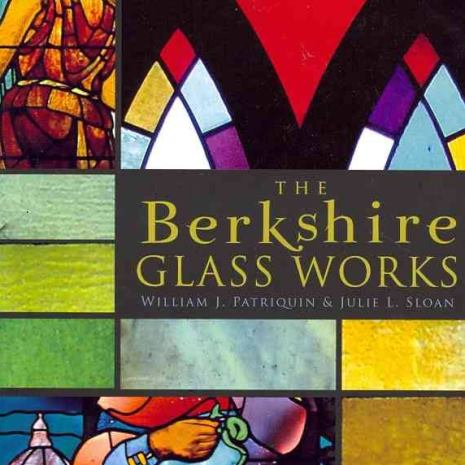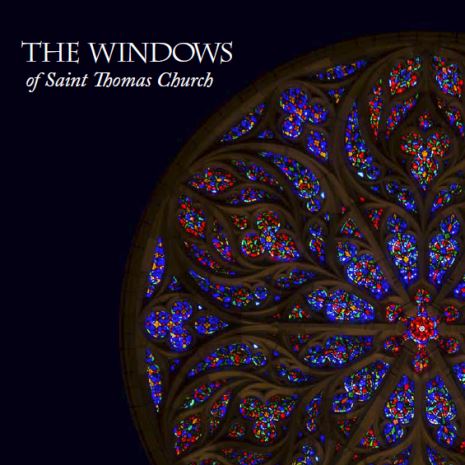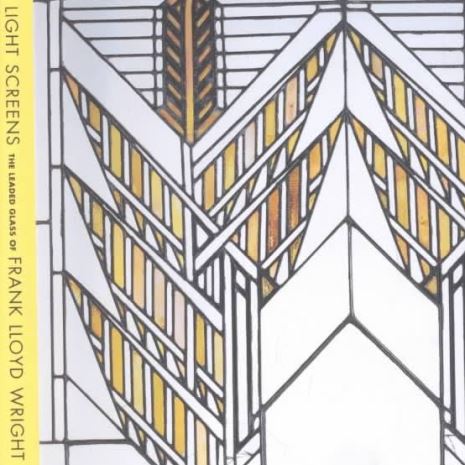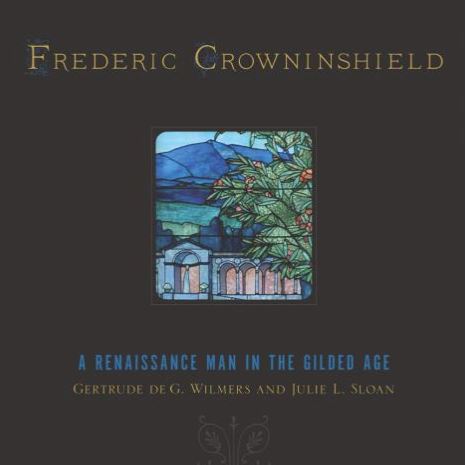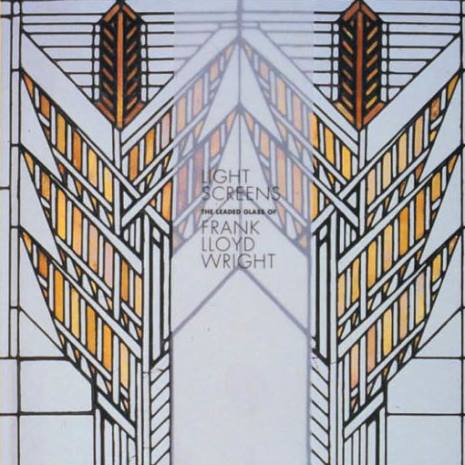Exhibit Review - Los Angeles Times
ART / ARCHITECTURE
Windows on modernism
Frank Lloyd Wright's nature-inspired architectural style found its way to his stained-glass making, with its own set of abstracted forms.
By Hugh Hart , Special to The Times
Judging from a 1902 sketch, Frank Lloyd Wright was not much of a speller.
The master architect scratched down "sumach," then tried "shumac." But grammar aside, the notes he left behind have thrilled scholars of his leaded-glass artwork. It's proof that the inspiration for the stained-glass window he designed for the Dana House in Springfield, Ill., was, in fact, the sumac tree.
The sumac window, and the sketch, are included in "Light Screens: The Leaded Glass of Frank Lloyd Wright." The exhibition, which runs through Jan. 5 at the Orange County Museum of Art, features 50 windows created for Wright homes between 1885 and 1923. There are also sketches, floor plans, photographs and a box of children's toys to help explain the sources behind Wright's intricately patterned art glass.
Some explanation is useful, because Wright, unlike nearly all of his contemporaries, was essentially creating abstract art with glass. "Usually, whether it's medieval or modern glass in a cathedral or a Tiffany window in a house, stained glass is a picture in glass," says exhibition curator Julie L. Sloan, LLC. "Wright was doing abstractions, and that was shockingly new."
For Sloan, decoding Wright's glasswork has become vocation, publishing specialty and presiding passion for the last 19 years.
Outfitted in pearls and a sleek black ensemble, Sloan showed up at the museum recently, fresh from a flight from her Boston-area home and eager to recite chapter and verse on the influences fueling Wright's handiwork.
First, she reviews Wright's apprenticeship with Louis Sullivan, which produced elegant but derivative windows, represented in the museum exhibition by a piece he did for the Luxfer Prism Co. in 1898.
Moving right along, the exhibition focuses on the period beginning around 1900, when Wright launched his Prairie School style of nature-inspired, low-to-the-ground architecture. The windows banish curves in favor of chevrons, rectangles and squares, and Wright introduces color for the first time. "Look at the buds of the sumac tree," Sloan says, standing in front of the Dana House window. "It was very important to him in this period that the colors are all prairie-inspired -- gold, amber, green. They go with the houses. The materials, the natural wood and the colors that he used to paint the walls were all these warm colors."
Inside meets outside
Wright didn't pay much attention to the stained glass being produced by his contemporaries, Louis Comfort Tiffany and John La Farge. Instead he looked east, drawing inspiration from Japanese design concepts he'd first seen at the Chicago International Exposition in 1893. "Wright was thinking much more along the lines of shoji screens," Sloan says.
"Since he was designing for the Great Lakes region, one of the coldest places in the country, he had to use glass instead of paper. But he was taking that same concept of the screen, that it's transparent but is also a barrier. Wright wanted to bring the outside in, but at the same time he wanted to make a difference between outside and inside, so you had to have some boundary."
The artfully hued tinctures of color added just enough separation, simultaneously separating and transmitting the interiors from the great outdoors. Says Sloan, "If it were plate glass it wouldn't have been defining enough."
Sloan believes Wright also absorbed the same impulses that informed the Cubist movement in Europe. "If you compared what Wright was doing with what Picasso was doing at the same time, it's not that Picasso was influenced by Wright -- they didn't know what the other was doing -- but they were both responding to something in the air, to this modern school of thought."
Besides the abstracted natural forms, more obscure references inspired some Wright windows, Sloan says. "Many of the patterns are abstractions of the design of the house itself." Pausing in front of the Robie House exhibit, she explains, "If you take that window and set it against the elevation drawing of the house, you not only get the roof angles but also the same proportional relationship between the walls and the chimney."
Deciphering the windows has become a speculative parlor game for some Wright aficionados. Is the red square anchoring the 1912 Francis Little House window supposed to be Wright's "signature," which he sometimes used as his homage to the Japanese "chop" mark? Are the "dancing triangles" Wright used in the 1917 Los Angeles Hollyhock House windows inspired by the short-lived fad known as crystallography? And is that an eagle crowning the 1910 chevron-laden window for the Bradley House?
"Who knows?" Sloan says and laughs. "He didn't give us many clues. So much has been read into these windows that I try to stand back from assigning more to them than what he told us."
Energized by wild colors
Sloan walks into the next part of the exhibition and gestures at a set of wildly incongruous red, white and blue windows he designed for the Coonley Playhouse in 1911. Reminiscent of Piet Mondrian's work a decade later, the windows' bright, buoyant circles represent a radical departure from the strictly rectilinear shapes and earth-toned palette found in most of his windows. What was that about?
"You have to look at what he was doing in his life as well as his architecture," says Sloan, who explains that immediately before the Coonley assignment, Wright had spent 18 months in Europe with a client's wife, soaking up avant-garde culture.
"He really was tossing everything out, getting rid of the status quo, the family, the house in the suburbs, going to Europe. I think that Wright was somehow energized with these wild colors."
Sloan became intrigued with the stories behind the windows in 1983, when she cleaned two Wright windows for a Christie's auction while working at a New York stained-glass studio.
"I had to get up close and personal with literally quarter-inch-by-quarter-inch pieces of glass, row upon row," she recalls. "I spent hours looking at this glass. Our studio dealt with Tiffany, with La Farge, with the modern glass that went into the National Cathedral. This was completely different. I thought, interesting! Let's see what I can find out about it."
Free-standing artworks
As it turned out, not much had yet been published on Wright's leaded glasswork. But in the early '80s, Wright's windows, which in previous decades had sometimes been sold off in yard sales or simply demolished, were beginning to be perceived as free-standing objets d'art.
Spurred by a spending spree by Tom Monahan, the founder of Domino's Pizza who'd become a big-spending Wright collector, prices for the architect's windows, rugs and furniture took off. By the mid-'90s, some Wright windows were selling for six figures, including the Tree of Life piece, which auctioned for $105,000.
Sloan, meanwhile, had received a National Endowment for the Arts grant to learn all she could about Wright's stained-glass legacy. She took 18 trips to the Midwest, studying the windows in the structures for which they were made.
"It leaves you speechless to walk into one of his buildings," she says. "I remember in the Martin house, in which all the Tree of Life windows exist, in this one bedroom there was this series of seven very ornate windows, one after the other. It really hit me about the architectural meaning of this glass. They contributed enormously to these interiors in a very subtle way. Without the windows you don't get the whole message that Wright was trying to send. He never saw these windows as autonomous objects.
"And that's probably the biggest ambivalence I have about doing an exhibition of this sort. We have to show one window at a time." Exhibitions International, New York, which organized the "Light Screens" show, devised display modules designed to simulate the natural elements Wright so adored.
"We know Wright wanted to connect exterior and interior space, so we begin to approximate that the best we can inside a museum structure by placing tree branches, lights, fans on the inside of each exhibit module, so you'd feel when you're looking at this that you're inside one of Wright's houses looking out," says Sarah Vure, curator of collections at Orange County Museum.
"Light was God to Wright," Sloan says. "Throughout his life he wrote about light in such ecstatic language you'd think he was talking about celestial visions. He saw light as the beautifier of the building, and glass occupying the same territory as the jewel."
Still, he never regarded his windows as autonomous pieces of art. What would Wright, who died in 1959 at age 91, think about an exhibition that isolates the windows from their homes?
"The windows were part of the architecture, yes, but Wright considered architecture to be the mother of all arts," Sloan says.
"He thought the windows were art in the same way that his furniture, his rugs and the houses themselves were art. To know that his glass is in a museum? I think Wright would be thrilled to pieces."
What: "Light Screens: The Leaded Glass of Frank Lloyd Wright"
When: Tuesdays to Sundays, 11 a.m. to 5 p.m.
Where: Orange County Museum of Art, 850 San Clemente Drive, Newport Beach
Ends: Jan. 5
Price: $10, adults; $9, seniors and students; $5 for children 6 to 17
Contact: (949) 759-1122


